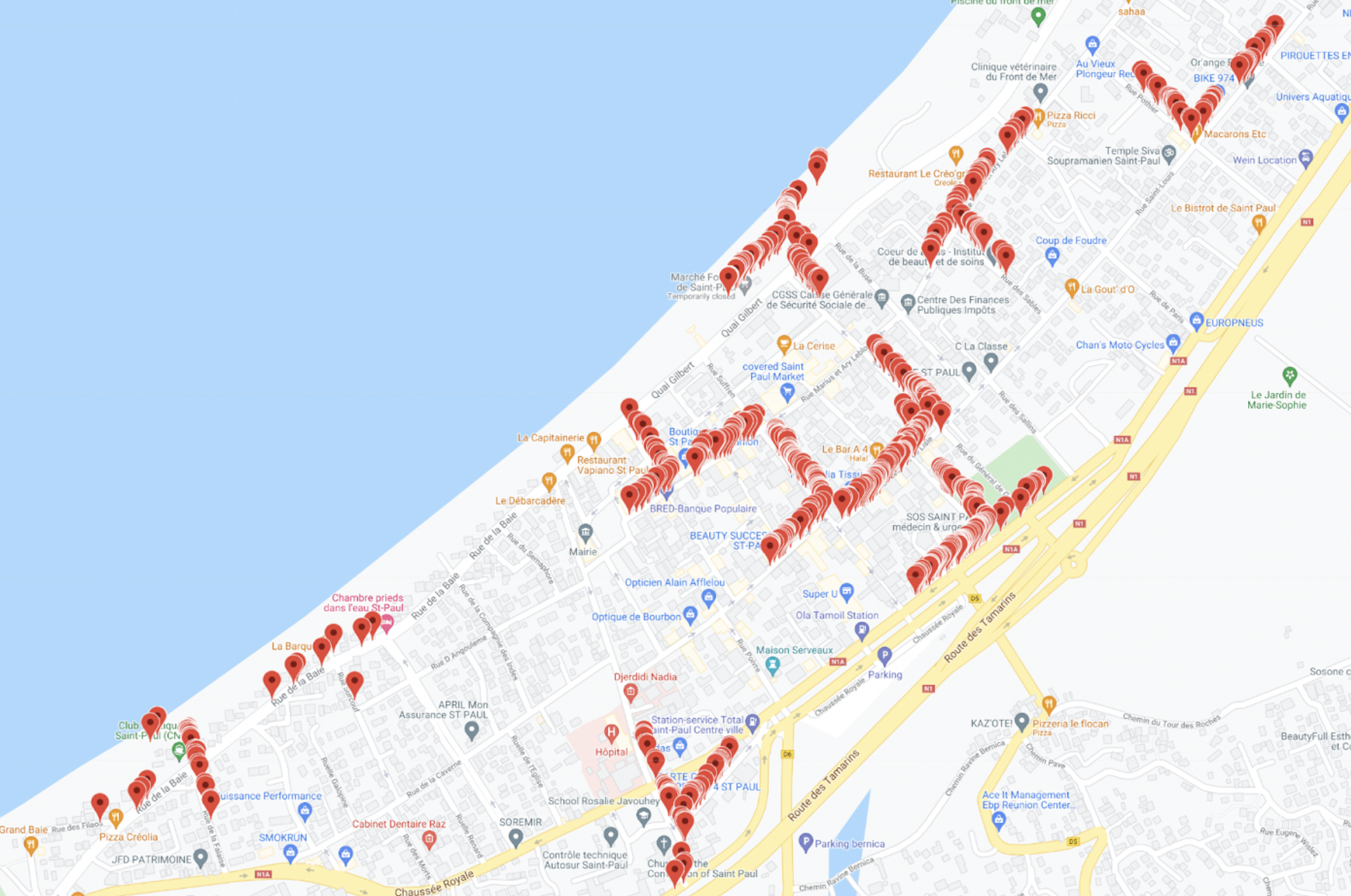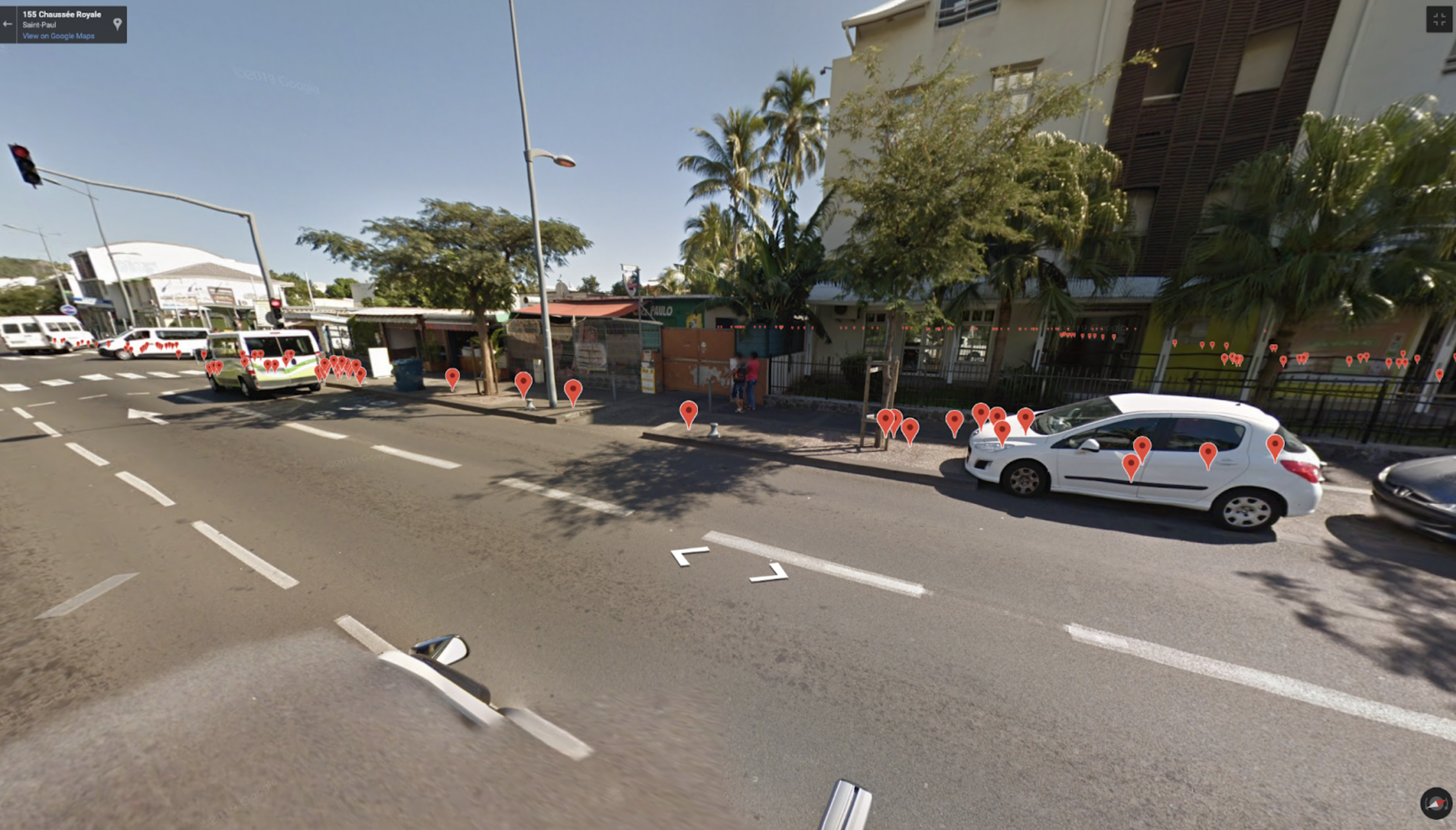La Reunion, France: Using geospatial data science to understand litter
CONTEXT
CITEO is the French Producer Responsibility Organization (PRO) for paper and household packaging. From 2021, the organization has to bear the costs of cleaning up litter in the French overseas territories. Starting in 2023, this obligation will also apply to mainland France. To better estimate these cleaning costs (and optimize them), the municipalities must be able to understand the where, what and why of litter in their territories. Citeo engaged with Litterati to carry out a litter baseline study in the French territory of L'île de la Réunion (Indian Ocean). Two municipal locations were selected, St Denis and St Paul, to carry out the research. On April 12th and 13th 2021, six Litterati trained researchers carried out the litter study across 128 locations and a total distance of 38,2 linear kilometers. Over ten thousand (10,344) littered items and 104 points of waste infrastructure (waste receptacles) were documented.
Clémence Bruttin, Citeo's leader in charge of managing the litter projects, explains Citeo's experience with Litterati by saying, “The Litterati Platform helped Citeo gather granular data on packaging waste, as well as uncover valuable insights on where and why this packaging is littered so that we can invest funding in a smarter way to keep our cities cleaner.”
CHALLENGE
By working with Litterati, CITEO wanted to answer the following questions:
Where are the highest concentrations of drinks and food-related litter appearing?
Are the bins efficient/performant in collecting litter?
How do the type of location (parking lots, commercial corridors, parks), the population density, and median income influence the incidence and composition of litter found?
LITTERATI SOLUTION
Litterati established a geospatial data science approach, defining the research locations and considering external factors such as population density, POIs (retail outlets, restaurants, bars, cafes, banks, schools, bus stops, etc.), income data, and others.
The research was conducted by trained researchers using the Litterati app’s citizen scientist feature to enable consistent data collection. The data was uploaded into Litterati’s data platform, where both people and Artificial Intelligence technology categorized everything by type, material, and brand. Litterati’s data science team analyzed the resulting data to answer Citeo’s initial questions.
CONCLUSION
From the data collected, it was observed that Drink (bottles, cans, bottle caps, etc.) was the highest found category considering volume and weight of the litter.
The category with the highest number of items was Other, which is a combination of small pieces & unidentifiable objects. Most of these items were made of paper and plastic.
The 2nd most frequently documented category by a number of items is cigarette butts.
Several correlations could also be observed between POIs and littering patterns in both cities. For example, in St Denis, we observed the highest smoking-related littering in tourist and retail locations. Whereas for food & drinks, we observed the highest incidence at schools and retail areas.



